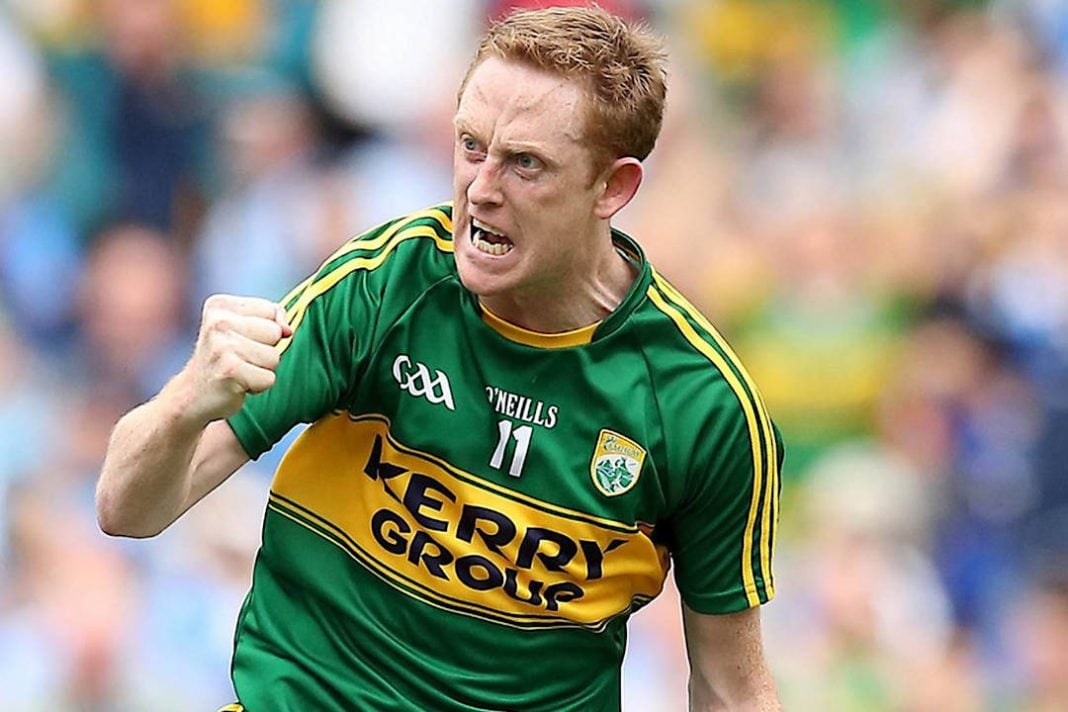Gaelic football is an intimidating sport to get into if you have no experience playing it at a junior level. However, while there are a lot of unique rules to understand, we found the best place to begin is with the Gaelic football positions. Once you know the positions in Gaelic football, you can follow how the game is played and what to look out for during a match.
If you did not play GAA football as a youngster, it’s best to think of it as a combination of different sports. Some aspects are akin to soccer, rugby, and basketball. But, Gaelic football has a unique rulebook and plays at a different pace. The aim is the same as any other sport, score more points than the opposition. You can register points in two ways. You can punch or kick the ball into the net, which is a goal and it’s worth three points. Or you can kick or punch the ball over the goal and between the uprights, counting as one point.
Each team has 15 players who take up a unique position on the football field. Some players are only on the pitch to score goals and create chances for points. Other players are there to stop the forwards from receiving the ball. While this may sound confusing, remember the basics. Each team is trying to score more than the other, and there are two ways to get points on the board.
GAA Football Positions: Number 1, Goalkeeper
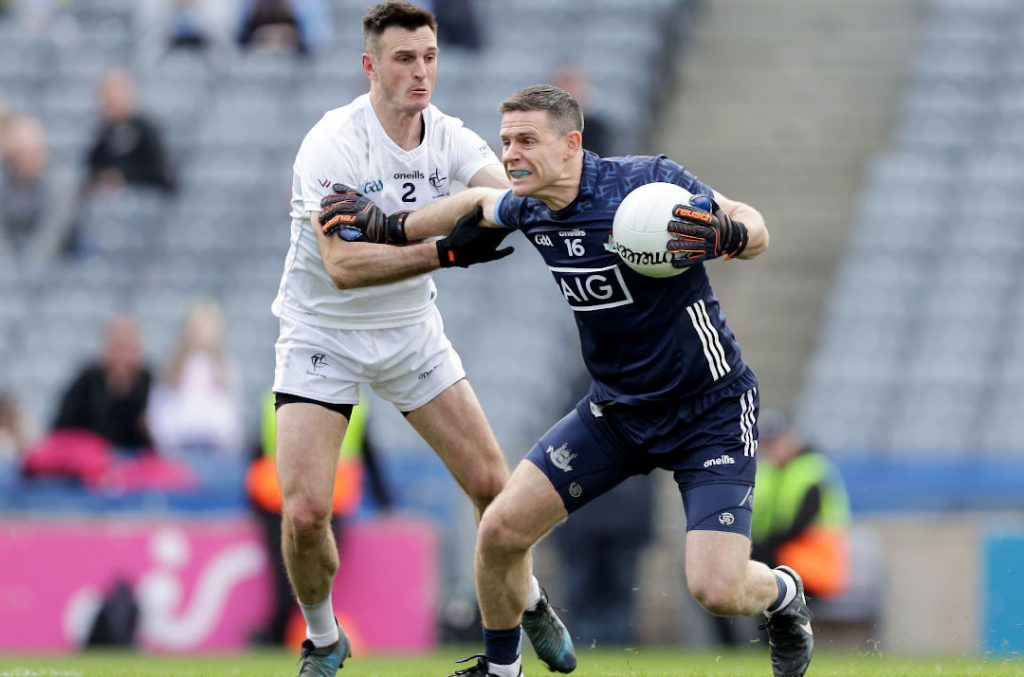
Every Gaelic football team has a goalkeeper, but how each team utilises the role varies. Foremost, the goalkeeper is there to stop shots at his goal. He can’t do much about the shots that sail over the crossbar for one point, but it is his job to stop the opposition from scoring a goal worth three points.
Some GAA teams have utilised a new role for the goalkeeper, increasing their contribution to the game. If you have watched soccer, goalkeepers are spending more time with the ball at their feet and are encouraged to get involved in the plays. The same process is happening with Gaelic football, as the positions on a football pitch are constantly developing. The modern-day goalkeeper position in Gaelic football is to get the game moving as quickly as possible and find teammates across the entire pitch. A great goalkeeper, like Stephen Cluxton, is almost as important as a lethal forward.
While the positions and tactics on a GAA pitch are constantly changing, the underlying position remains the same. The goalkeeper is there to stop goals. It is a bonus if they can get their team on the front foot, or score points as a placekicker. However, most of the time, you will see them in between the sticks, one at both ends of the pitch.
GAA Football Positions: Number 2 and 4, Corner-Back
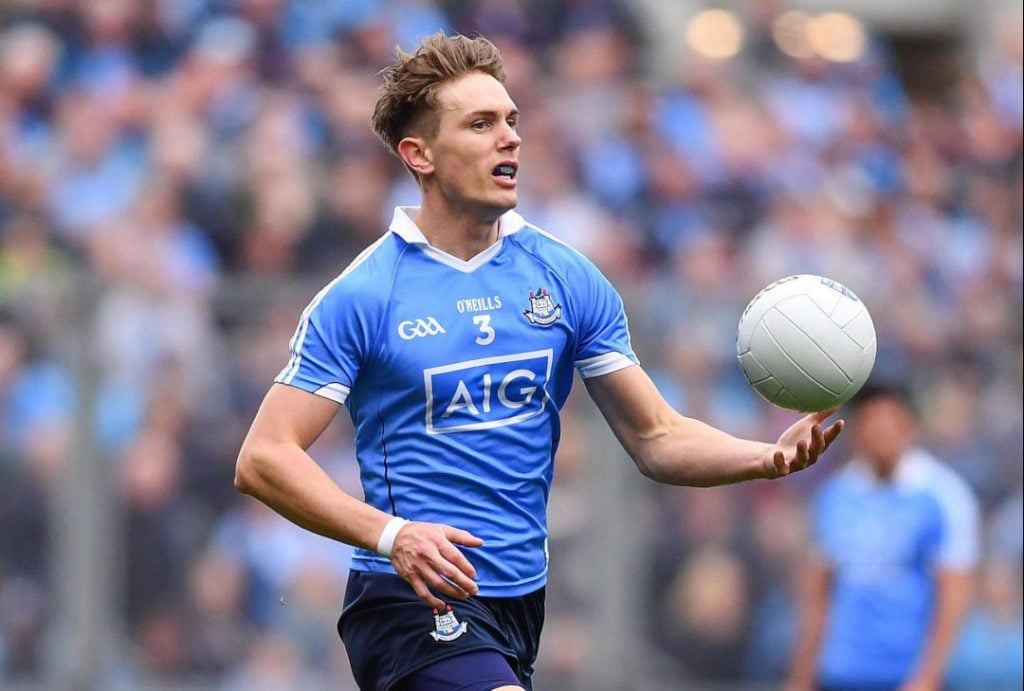
The next football position to talk about is the corner-back. There are two on each team and they operate on the left and right side, ahead of the goalkeeper. Once again, there is one key role for the GAA position, and that is to mark the opposition’s best scorer. A good corner-back can hold up the opposition and dispossess the ball in a clean tackle. If the corner-back fouls the forward, they are at risk of giving away a free, which is like a penalty kick in soccer.
In the modern game of GAA, players have multiple roles to fulfil, and that is also the case for corner-backs. Not only do they act as a last line of defence, but they are quick enough to start or finish an attack. Some of the best Gaelic footballers of all time were corner-backs, like Michael Fitzsimons. That shows how effective this football position can be.
2017 All Star defender – 3. Michael Fitzsimons (Dublin) #PwCAllStars #RTEGAA pic.twitter.com/gtkhKYxUXp
— RTÉ GAA (@RTEgaa) November 3, 2017
However, if you speak to any dedicated GAA fan, they will tell you the defensive side of the position should come first. Nobody wants to see their club leak easy goals, so having dedicated and intelligent corner-backs is vital in a good team. Yes, the best players also contribute offensively, but stopping goals and points is another way to get the crowd on their feet.
GAA Football Positions: Number 3, Full-Back
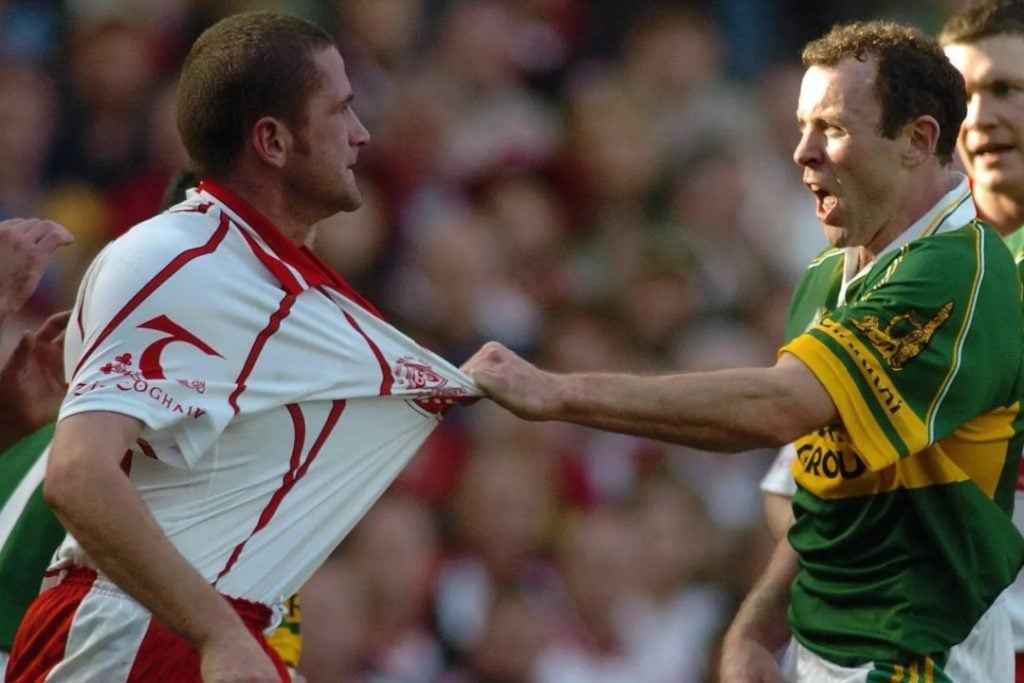
While the corner-backs require pace to keep up with forwards and get up the pitch in attacks, full-backs are the rock of the team. We expect them to protect the goal, stop attacks, and make life difficult for the opposition. A good full-back will look like a goalkeeper as they dive, block, and make themselves a nuisance.
Some Gaelic football positions are less prone to change than others, but the role of a full-back changes depending on what team you watch. Some footballers in that position stay back and rarely get involved in attacks. However, there are more agile full-backs in the league that can lead a counterattack from deep. These players have merged the roles of the defensive line, and it gives you an insight into where the sport has been going in recent years.
Seamus Moynihan on David Clifford. He coached his club side Fossa. Seamus was the guest on The GAA Social this week- what a footballer he was.
🎧podcast here: https://t.co/8Qv3pfaMA4 pic.twitter.com/z8FmgR8ZRQ
— Thomas Niblock (@thomasniblock) July 27, 2023
Gaelic football teams are using the same football positions as ever, but with adapted roles. A sport where 15 players face off requires unpredictable plays and disguised tactics. Offensively using a full-back is a great way to catch a team off-guard. However, it can leave you exposed if you get the play wrong.
GAA Football Positions: Number 5 and 7, Wing-Back
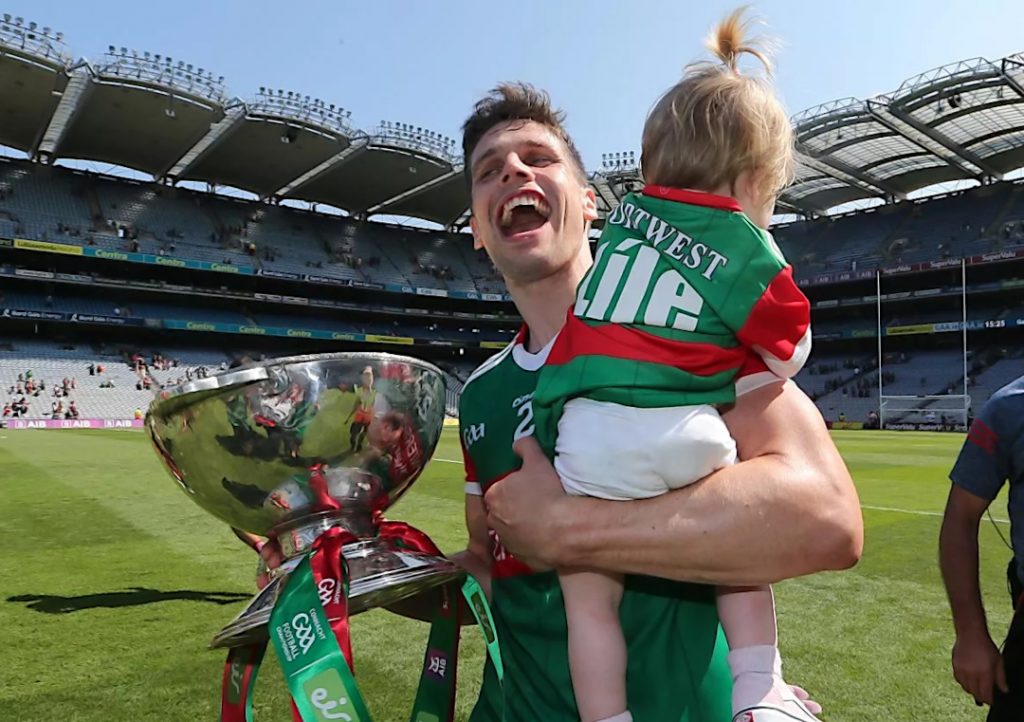
Gaelic football positions include one goalkeeper, six defenders, two midfielders, and six attackers. The wing-backs are part of that six-man defence, sitting higher up the pitch than the corner-backs. While they have defensive responsibilities, they can start attacks and stretch the opposition.
Wing-backs play an intense position on the football field. They are amongst the hardest-working players across the team, constantly sprinting and breaking the lines. Being defensive-minded, the wing-backs are not afraid to put in a tackle and win back possession for the team. The very best Gaelic footballers require discipline. They need to hold up the play, avoid giving away fouls, and get the team forward.
Lee Keegan has announced his retirement from Inter County football.
All at Mayo GAA wish Lee the best of luck in his retirement.Read More Below 🔽🔽https://t.co/i33LJQ1dR2#mayogaa pic.twitter.com/X1twCQX5ZT
— Mayo GAA (@MayoGAA) January 9, 2023
A lot of football positions require players to think about the game in two minds, and that comes from the wing-back. An effective player in this position, like Lee Keegan, can save you the game at one end and then set up the winning score at the other.
GAA Football Positions: Number 6, Centre Half-Back
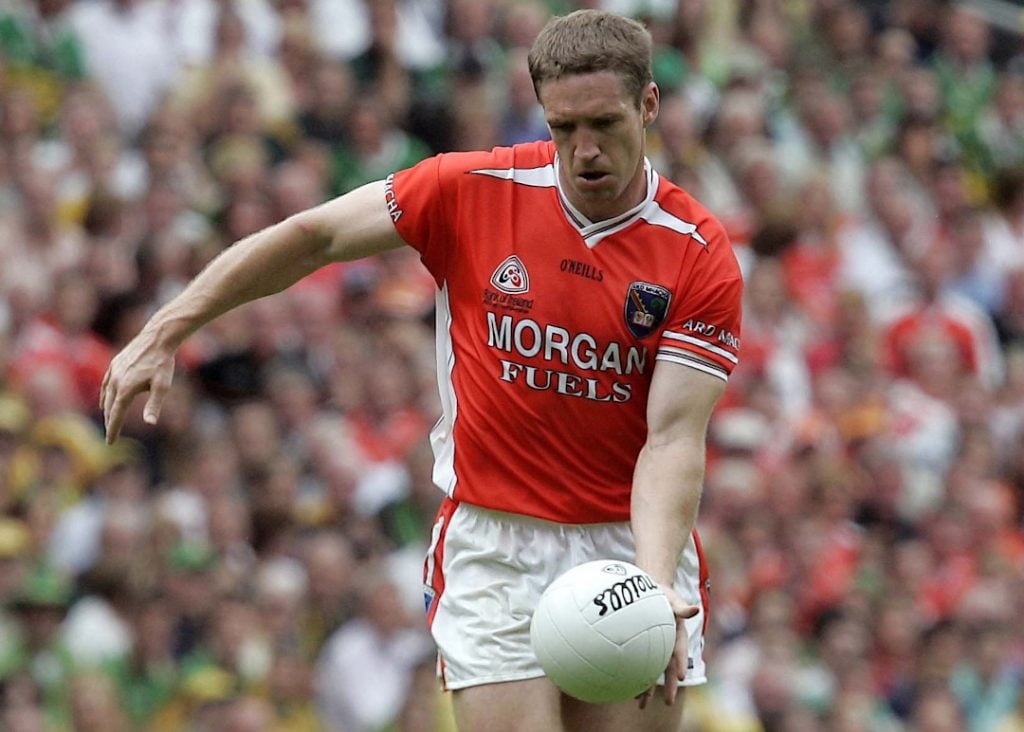
There are several important GAA football positions, and the centre half-back is one of the most vital in the defensive line. Traditionally, a centre half-back would play an enforcer-type role. This involved lunging into challenges and making the opposition think twice before playing the ball into this area of the pitch. The role has always required discipline, as they need to boss a certain area of the pitch.
Centre half-backs, like Kieran McGeeney, were leaders and encouraged the rest of the team to dig deep. It was their job to disrupt play in the middle of the park before the ball made its way to the forwards. Skilled players had a sixth sense of danger and always ended up in the right position at the right time. Footballers in this role were not the fastest on the pitch, but they made life difficult for the attackers.
As we have mentioned, GAA football positions are always changing. However, the centre half-back role has changed little over the years. The players in this position are certainly freer to roam further than ever before, but the overall role is largely the same. If you hear someone talking about this position, think about a player who won’t stand for any nonsense and wants to get involved in breaking up play.
GAA Football Positions: Number 8 and 9, Midfield
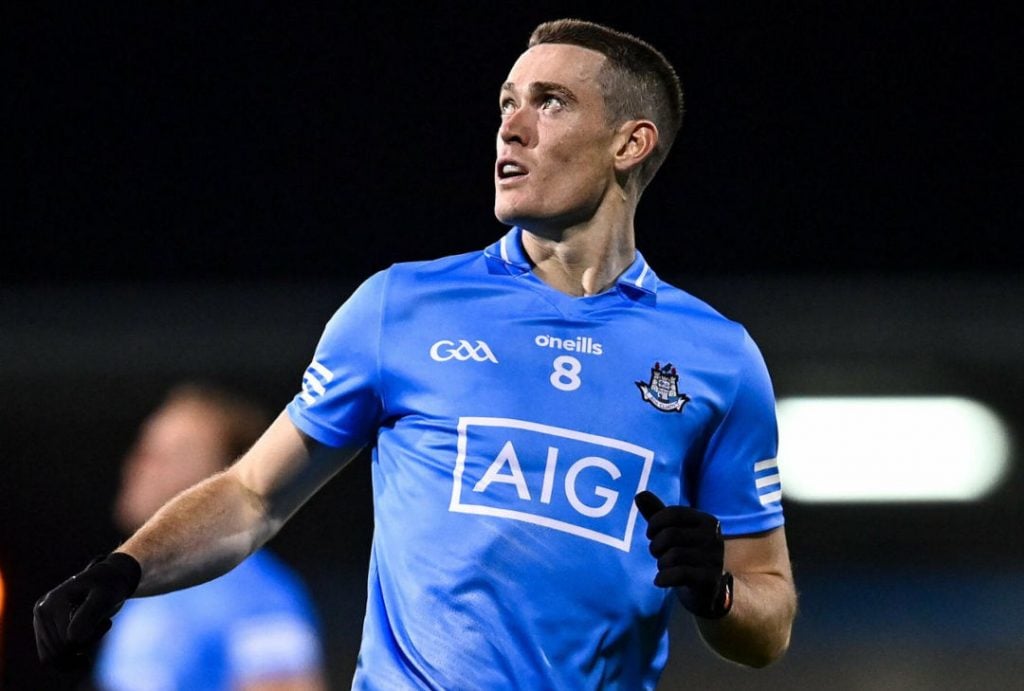
Now that we have covered all the defensive positions on a football pitch, it’s time to talk about the midfield. A good midfield wins games, that is the same across every sport. It is the job of these two players to link play from defence to attack and in Gaelic football. They are the most active players on the pitch, covering well over ten kilometres in a single match.
Gaelic football midfielders do it all. They lead attacks, set up the forwards, and defend with the back line. The best football players get scores as well as do the dirty work. These players need vision, as they are capable of cross-field passes and kicking the ball into space. They are also creative, having to compete against the opposition centre half-backs and midfield.
If you are unsure what a Gaelic footballer looks like, these guys are the prime examples. They are tall, fast, strong, and they are deadly with time and space. While the scores are what the fans are here to see, they create a lot of opportunities from these positions. If you want to see a prime example of a top-notch midfielder, check out Brain Fenton’s best bits.
GAA Football Positions: Number 10 and 12, Half-Forward
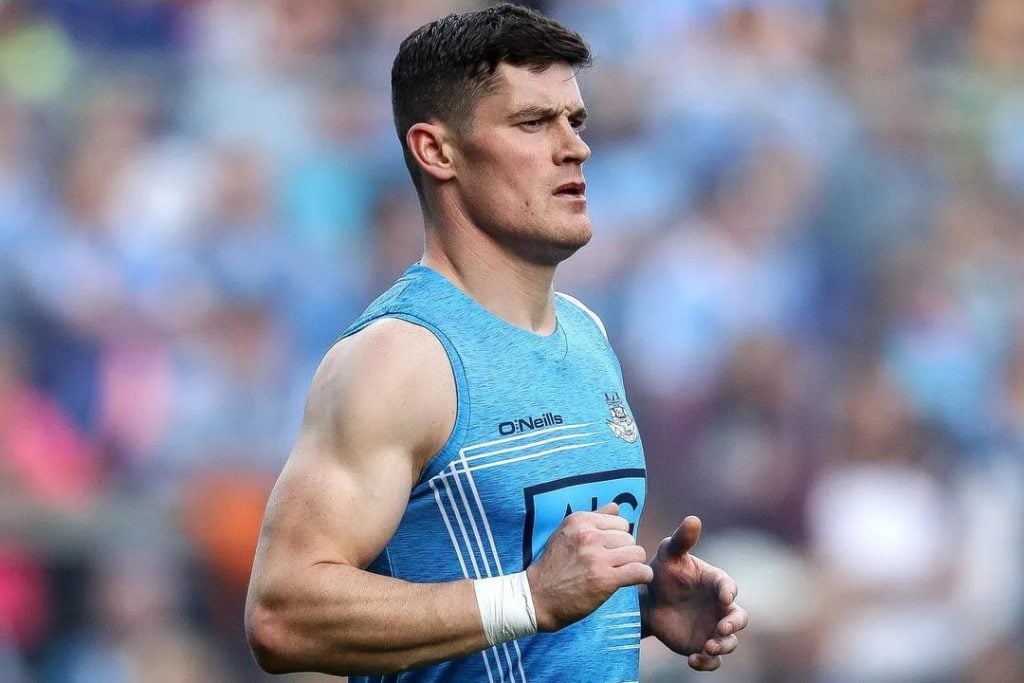
Like the defensive line, there are players on both sides of the pitch with near-identical roles. The half-forward is there to run, mainly contributing to the offence. These players do not get the ball regularly, so when they do, they need to make it count. That means anticipating the game and delivering crucial passes further up the pitch.
The half-forwards also have defensive jobs to do. The opposition will try to get the ball out wide into space, and these guys need to track back and cover a lot of ground. Half-forwards can run all day and are not afraid of doing both sides of the game. They are on the pitch for their attacking contributions, but they must cover the ground to offer balance to the team.
Several GAA positions require a lot from players, but the half-forwards need patience. If they try too hard to get involved in the match, they will expose their team at the back. An effective player, such as Diarmuid Connolly, is always in the right place at the right time to win the ball when it breaks from a tackle or poor pass.
GAA Football Positions: Number 11, Centre Forward
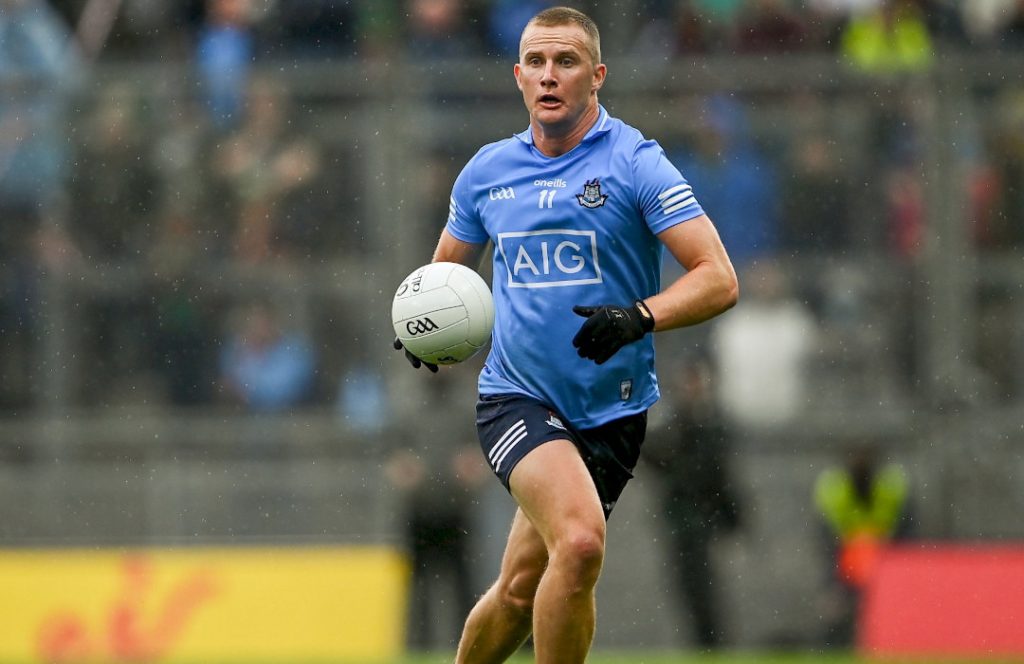
Ahead of the midfield is the most important position in the team, the centre forward. Think of a quarterback in the NFL, the centre forward creates dangerous attacks with ingenious passes and skill. Everyone dreams of playing in this position, but it requires dedication. The best players can rob the opposition’s defence and start an attack out of nothing.
Gaelic footballers in this position must tackle and scrap for every half-chance. Plus, when they get their moment, they need a cool head to pick the perfect pass or the opportunity is gone. If you are watching your first game of GAA football, watching the number 11 is a great way to learn about the details of the game. Watch the movement, the speed, and the accuracy of the player and you’ll have an entirely new appreciation for Gaelic football.
Comparing football positions to another sport is the best way to envisage a centre forward. They are like a playmaker in soccer. Most of the creative moves come through this position, such as a delicate pass or a piercing run. Having an excellent number 11 on your team will allow the points to flow.
GAA Football Positions: Number 13 and 15, Corner Forward
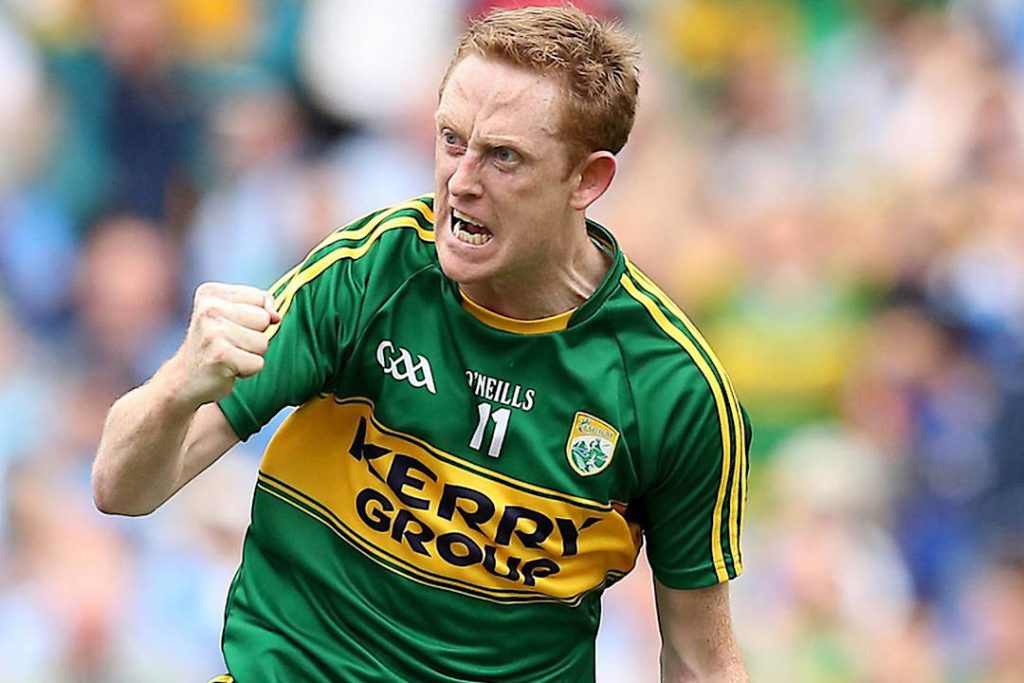
The corner forward has one fundamental role, getting points on the board. These players will have an eye for the posts and will look to make space for a score whenever they can. Players in these positions make the game look easy. They lose their man and unwind a lethal strike from range.
While these players are also adept at beating the goalkeeper, scoring points is an integral part of Gaelic football. The posts never move, so scoring an uncontested one point is often better than risking it for three. The best part of watching corner forwards is the creativity. They are coming up against resolute defenders, so they are required to do something out of the ordinary in every single game. If you are coming from another sporting background, watching players like Colm Cooper is a great place to start.
Watch these 2 moments of Colm Cooper genius from 2013 for @Kerry_Official vs Dublin; what are your favourite memories of seeing Gooch play? pic.twitter.com/Uwx5wqDxxh
— The GAA (@officialgaa) April 4, 2017
One last aspect of the corner forward position is accuracy. When they can score, they must be able to put it away. We have already spoken about the defensive positions on the football field, and they are quick and smart players. Getting the chance to score can be rare in big games, so they must create and execute while under immense pressure.
GAA Football Positions: Number 14, Full Forward
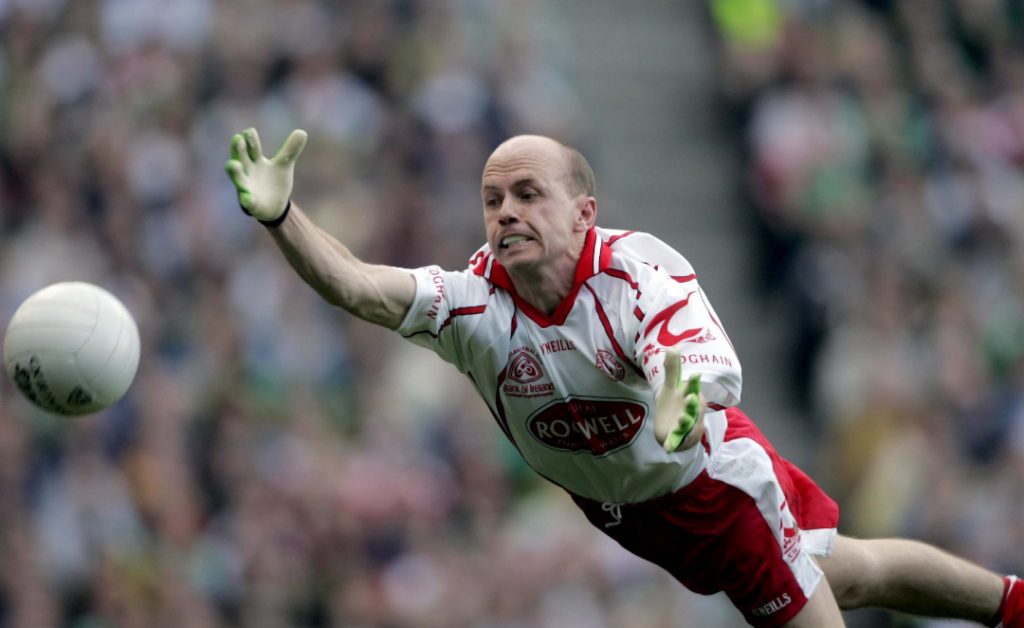
Once again, comparing Gaelic football positions to other sports has its advantages. A full forward is like an old-fashioned striker in soccer. The big man up top is there to cause problems for the defenders and make himself a target man when his team is on the attack. The best players can look uninterested in a play, then explode into life and score out of nothing.
Watching players in these positions is not exciting the entire game. They chose their moments to shine. Other roles are there to run and disrupt the opposition, but a full forward can’t score unless they are close to the net. A lot of coaches will tell you Gaelic football is about patience, and that is true. But the best players across the GAA are excellent at punishing teams for making minor mistakes.
Some of the best GAA footballers of all time were full forwards, like Peter Canavan. Across his lengthy career, defensive lines had ample time to get used to all his tricks. However, each week during the season, he would outsmart and score incredible points and goals week after week. If that is not a reason to give Gaelic football a go, what is?
Gaelic Football Positions Conclusion
There you have it, everything you need to know about the positions in Gaelic Football. If you are thinking about tuning in for the new season, be on the lookout for a grand play by the centre forward. Or watch the midfield battle and see how the players can get their team on the front foot. There is plenty more to enjoy while watching the GAA, but that is as good a place to start as any.
Remember, every sport is developing and changing, and Gaelic football is no exception. Players are being forced to pick up more roles, recycle the ball quicker, and keep the game always moving. The best players are ones that can disrupt the constant flow of the game, either with smart fouls, great scores, or incredible blocks. Now that you understand the unique positions on the field, it’s a lot easier to appreciate what the boys are doing out there.

